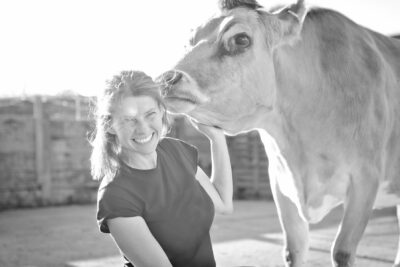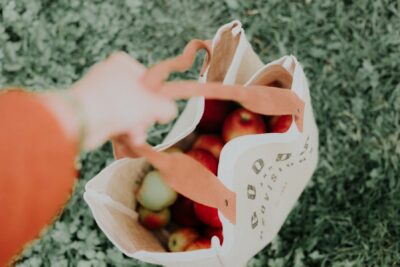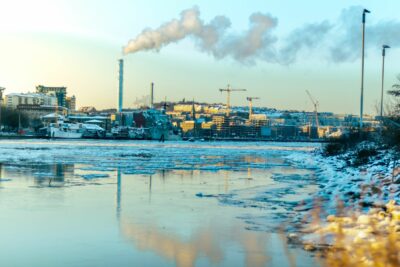Thirty years ago, I became vegan. It was both incredibly easy and ridiculously hard.
The first and main difficulty was finding out why I should be vegan. There was no internet back then, no documentaries, and no chance of stumbling across a dairy exposé in the newspaper or seeing a story of hens being rescued from slaughter pop up on my phone. I’d never met a vegan, nor ever seen one on the television. I’m not sure I even knew the word. I’d been vegetarian since I was 12, but I was in my 20s and at university before I learned about the realities of the milk and egg trades. Although it all rang true, and I believed every shocking word of it, it still took some months for the visceral horrors to filter through and take hold. Once they did, however, in the autumn of 1992, I made the decision. I had to go vegan. And that was the easy part.
When you stop seeing meat, milk, and eggs as food and instead see them as parts of animals, they become no more food than a brick or a blanket are. It always baffled me when people said I bet you miss bacon because they may as well have said I bet you miss eating floor tiles. I just didn’t. And yet, that first week without cheese was hard, and this is why…
Not A Real Vegetarian
As a child, I wanted no part in harming animals, and so I stopped eating them. A full three years after going vegetarian, my school teacher dropped an almighty bombshell: I hear you’re vegetarian, she said. But I bet you’re not a real vegetarian. I bet you eat cheese made with rennet.
What? I’d never heard of rennet. I went to the library and found that, astonishingly, she was right. Almost all cheese back then contained rennet — the stomachs of calves — and I had been eating it unknowingly. It was my first lesson in not taking things at face value and I immediately stopped eating all cheese as I could not be sure which, if any, were actually vegetarian. By the time I was coming to understand why dairy was as big a problem as rennet, and I was standing on the brink of veganism, a whole host of vegetarian cheeses were suddenly being marketed. After those cheeseless years, I really wanted them, and the inside of my head became a relentless good-versus-evil battleground. By then, I knew what cows endured in milk production. I knew calves were stolen away and sent to the veal industry, or shot in the head if their tiny bodies could not turn a profit. I knew that their mothers grieved, lost all hope, and eventually broke down, at which point, they were also disposed of. And yet I tormented myself by loitering around the cheese counter at the supermarket imagining the taste and feel of the different varieties that I knew I couldn’t have. At night, I dreamed about cheese. After seven days, I cracked. I bought every vegetarian cheese the store had to offer and I ate them all, pounds and pounds of cheese. Afterwards, I felt absolutely sick with the guilt of it but I also felt sick with cheese. That was the day I became vegan.
What Did Vegans Eat?
Today, we can answer the question What do vegans eat? quite simply, but there were very few convenience foods available for vegans in the early 1990s. And, in any case, I had very little money to buy them. But I had been taught to cook and so I could rustle up hearty stews and casseroles, soups, pies, dal, and veggie curries, all inexpensively. I was eating a whole food plant-based diet before anyone had called it that. You may ask Did you notice any health benefits? but I was a student and around half my calories came from beer, so I can’t say that my health flourished in any noticeable way. But I flourished. I knew that I’d made the right decision, and that sat very well with me.
In 1992, no supermarket stocked plant milk, and nor did coffee shops. In fact, I don’t think there were coffee shops yet. If you wanted to meet someone outside of the home, you sat in an eye-stingingly smoky pub and drank warm beer or you met in a ‘greasy spoon’ cafe and drank tea.
There were, however, a few vegan foods available to us. They included:
- Batchelors Beanfeast – sachets of dehydrated flavoured soya mince which could be turned into a Bolognese or the filling for a shepherd’s pie. They were tasty enough but virtually indigestible and gave us all some pretty outlandish wind
- Sosmix and Burgamix – more dehydrated mixes. Just add water, shape, and fry. They had the texture of window putty and could not have looked less appetising. They’re still available if you’re ever tempted to try them
- Mock duck – of all the things vegans may have missed back then, duck was not one of them. It’s a mystery why you could buy mock duck in every health food shop but nonetheless there it was
- Nuttolene – I’m still unsure what this is or how you were supposed to eat it. I just know that once was enough for me. In fact, it was one time too many
- Nut roasts – more dehydrated ingredients in various flavours that you mixed with water and baked. They were actually quite nice and were a regular Sunday lunch standby
- Veez – possibly the first vegan ‘cheese’. It had no discernible taste and looked like something you’d scrape out of an abandoned fridge
- Bourbon biscuits – these have always been vegan and were available everywhere, so you could always get a sugar hit. Often, these were our saviours
- Disos – the only available vegan wine. It stripped your insides like the finest petrol
The Miracle of Linda McCartney
Shortly after I went vegan, the Linda McCartney range of vegetarian foods arrived in supermarkets and four of the items were vegan: country pies, pasties, sausages, and sausage rolls. One vegan group put out a press release saying the company was trying to kill us with unhealthy foods while the rest of us lapped them up. Around the same time, Swedish Glace ice cream appeared and it truly felt like we now had everything we needed. Yes, I would have liked a croissant and of course I would have welcomed cheese but these felt like minor inconveniences in the wider scheme of things. With my new vegan friends, I took to the streets with leaflets to persuade others that being vegan was not only an important ethical decision, it was a practical way of living.
Just a Potato, Please
In truth, it wasn’t all that practical; eating out was definitely a challenge. In Indian and Chinese restaurants, you could usually get something but you would go hungry in most other restaurants. In pubs there was only ever one choice and it was baked potato. Obviously, there was no vegan butter so you ate it dry. Sometimes you’d get a salad but without dressing. If there were baked beans on offer, it was a great day. Naturally, we fared better in vegetarian restaurants where we would know most, if not all, of the other people eating there, and that made dining out feel more like we were eating at a friend’s house. There were so few vegans in the country that even if you didn’t know ‘Bob from Coventry’ personally, for example, you had certainly heard of him. The country’s vegans all met up at the one annual Animal Aid Christmas fair in London where we swapped cake recipes, railed against the world, and wore our T-shirts with pride.
We knew then what many others would come to know: that animals suffer appallingly when we choose to eat them, their young, and their excretions and secretions. But we also knew about climate change and that farming animals was a driving force. I remember reading a Viva! booklet about this in 1999 and thinking We have to tell the world about this. I’ve been telling the world ever since.
Some Things Change, Some Stay the Same
A lot has changed in 30 years. The internet has allowed us to reveal to a global audience the horrific impact of animal agriculture on animals, the planet, and public health. Anyone interested can not only find out the truth, they can see it with their own eyes. Vegan groups have sprung up all over the world to educate, support, advise, campaign, and mentor. They host vegan fairs and festivals, meetups, and potlucks; they put on film showings and invite guest speakers. Undercover investigations make the mainstream media and ensure no one can be ignorant of the impacts of our food choices on animals. Powerful documentaries can be viewed for free and there are guided vegan challenges to help the v-curious navigate this new way of eating and learn more about the reasons for it. There are groups for vegan runners, knitters, bakers, people of different faiths, and anything else you might be interested in. Today, there are millions of vegans and we live in every country on Earth, and when I eat in one of many local vegan restaurants, I often don’t recognise anyone else in there.
The availability and quality of vegan food is a world away from where I began my own vegan journey. Every supermarket in the UK stocks a wide choice of plant milks, meat replacement products, yoghurts, ice cream, cream, cakes, cookies, pastries, ready meals, and much more, including a dozen kinds of very good vegan cheeses. No rennet, no dairy. I can even get several kinds of croissants.
Every restaurant from high-end to fast food has vegan options and sometimes a full vegan menu, and it’s rare to find a pub — now smoke-free — that won’t offer a choice of vegan meals and desserts. In the UK, being vegan could not be more convenient.
Despite all this, the vast majority of people who could change have not. The number of animals who are forced to endure the obvious injustice of farming and slaughter has risen exponentially, which has caused wild animal populations to plummet. The climate is warmer than ever before and we are reaching — if we have not already reached — a tipping point from which our beautiful planet cannot recover. Forests are destroyed for animal agriculture, waterways are polluted with farmed animal waste, and the ocean is being emptied of fish while simultaneously being filled with plastic dumped by the fishing industry.
The Hardest Part of Being Vegan
30 years ago, I learned how animals suffer for our food choices, and soon afterwards how our planet was suffering too. So much has changed for the better since then, and yet the scale of suffering and the seriousness of ecological breakdown are greater than ever and utterly heartbreaking. While it’s not the case that I have no hope for the future, it’s true to say that I have less hope than I once did.
The hardest part of becoming vegan for me was never missing cheese or croissants; it is bearing witness to humanity’s conditioned helplessness. It is knowing that most other people hate to see animals suffer as much as I do and want to protect our planet, but they are kept from acting by a food system that profits from our disempowerment. It’s knowing that we could end the misery of animal farming right now; we could pull back from the brink of climate breakdown; and we could let our planet heal and its wild populations recover. We could make peace with the world, and find our true place within it. We have the power to do all this, to transform our world, and we could do it almost overnight if only we were willing to try.



